Sri Lanka’s trauma with communal violence raging in Kandy eased on March 9, 2018. According to media reports (Times of India & Indian express, Mar. 10, 2018), no incidents were reported from the affected neighbourhoods of Kandy since then, although tension prevailed amidst strict security measures enforced by the security forces.
This was particularly reassuring as it was the first Friday after the incidents when, normally, after the prayers, the dispersing congregation could have indulged in violence. This sense of reassurance was further reinforced by ‘hundreds of Buddhist monks and activists’ who staged a rally in Colombo, condemning the ‘communal clashes destroying national unity’. The respite in violence encouraged the authorities to lift the curfew in Kandy and order a high level enquiry into the unfortunate events. However, as it turned out, the conflict had not ended completely with one more incident reported (Times of India March 12, 2018) from the north-western province in the early hours of March 11, in which a Muslim owned restaurant was attacked in a hate-crime incident, raising fresh tensions.
The incident in Kandy, the second largest city in the country located in Central Province, started as a simple clash between four Muslim men and a Sinhalese truck driver on March 4. Later when the injured Sinhala man subsequently succumbed to his injuries and died in the hospital, it enraged hardliner Buddhist groups to lead the charge the following day into Muslim neighbourhood and burn down shops, houses and mosques. The situation became even graver when the security forces pulled out the body of a 27-year-old Muslim youth from the rubble. The deceased, Abdul Basith was a local reporter in a radio station. Apparently, in his last communication, he had adversely commented on the prevailing chaos. The audio note has been circulated in the social media and provoked anger in the minority community.
Local administration quickly clamped curfew in Kandy which failed to contain the situation, forcing the Government to eventually declare state of emergency on the 6th of March, 2018 for a period of ten days, possibly because the conflict had potential to flare up into a major confrontation.
Special Forces, including army contingents, were deployed in the affected areas amidst reports of damages to Muslim owned businesses and at least four mosques, 37 houses, 46 shops and 35 vehicles having been vandalized, according to Hidayath Saththar, a member of Provincial Council in the Central Province.
Continued Attacks despite Emergency
The worrisome aspect of the event has been the fact that despite proclamation of emergency and heavy deployment of forces, sporadic attacks on Muslim owned properties continued on March 7th, one day after the imposition of emergency, in the areas of Akurana and Katugastota. The residents complained that the security forces watched the shops burn and did not take any action to stop the advancing mob. The police inaction was seen as a catalyst of the violence by Sinhalese. A grenade blast, also on the 7th of March, killed one and injured three persons despite heavy deployment of the Army in the region. The President, apparently with a view to strengthening the law and order machinery and achieving better coordinated efforts, appointed Ranjith Bandara, a senior politician from United National Party (UNP), as the new Home Minister, in charge of the police, relieving PM Wickremesinghe from law and order responsibilities.
The Opposition and State Reactions
Even as the religious leaders started efforts to defuse the situation, the Opposition lashed out at the Government, alleging a lax response. Allegations of police inaction were also emerging from the public and civil society. Former president Rajapaksa, who has also recently led his newly formed political party to massive victory in the local body elections, was not to let go of the opportunity. He accused the Sirisena Government of not discharging its responsibilities that led to inaction. The Janatha Vimukthi Peramuna also accused the government of allowing racism to develop in the country. Sri Lanka’s minister for industry and commerce, Rishad Bathiudeen visited Kandy to assess the damage. He mentioned about two Buddhist monks having been central to such communal atrocities in the past against the Muslim community. He demanded the arrest of the concerned persons. R Sampanthan, the leader of the Tamil National Alliance, also questioned the inaction of law enforcement agencies and dismissed government’s response as unacceptable. He added that ‘sense of accountability is greatly lacking and the culprits are convinced that they can get away with violent and unlawful actions’.
Prime Minister Wickremesinghe, in a statement in the Parliament, outlined the Government’s efforts to defuse the tension through dialogue between the two communities. He accused ‘extremists from outside’ for sparking violence which he has called as ‘organised acts of sabotage.’ He added that those who have witnessed the 30-year war in the country should realise the value of peace. Government spokesperson clarified that emergency was imposed to ensure that the clashes didn’t spread to other parts of the country. He admitted that there were ‘mistakes by the police in implementing law and order’, adding that some incidents happened in front of the police. The spokesperson thus affirmed accusations of police failure to stop the perpetrators of violence. A member of Wickremesinghe cabinet and leader of the Muslim party, Sri Lanka Muslim Congress (SLMC), Rauff Hakeem however affirmed the Government’s determination to take strong actions against the wrongdoers. According to media reports (Times of India Mar. 13) over 230 persons have already been arrested in connection with the communal clashes and for spreading ‘hate speeches’ on the social media platforms.
President Sirisena visited Kandy and addressed a special meeting of clerics from both the religious groups. The participants reiterated that overplaying of minor incidents on social media platforms was one of the major reasons why the conflict escalated like ‘wildfire’. The President urged the religious leaders to speak to respective populations in order to bring the situation in control and prevent the occurrence of such in the future. He instructed the security forces to pacify the situation as quickly as possible. Later, PM Wickremesinghe also visited Kandy over the weekend and met victims of the violence and assessed the extent of damages. Significantly, he is quoted as having said, “An organised group was behind the communal clashes in Kandy”, and that the ‘police has already received vital information about it’.
History of Communal Clashes
Although communal tensions in the island nation are not new, anything of this proportion had not happened in recent times. The last major riot happened in 2014 in South-Western part of the country, mainly in the Kalutara District. The casualty amounted to at least four persons dead, 80 injured and around 10,000 people from both communities displaced. The then President Rajapaksa’s perceived inclination towards extremist Buddhist organisations led to the minority communities losing trust in his government. The Tamil minorities wholeheartedly supported Sirisena in the hope of change that would ensure equal treatment of citizens. The present Government has a mammoth task of fulfilling those expectations of the minorities by preventing the spread of such communal hatred in the country. The recent trend does not send positive signals and the establishment needs to invest greater effort in peace-making between the two communities.
International Community and Diaspora
The 2014 riots referred to above had created an international furor against the Rajapaksa government, and foreign governments had urged the President to take immediate action. On similar lines, even this time around, the UN political affairs Under Secretary Jerry Feltman, who arrived in Sri Lanka on a three day pre-scheduled visit, coinciding with the troubled situation in the country. The US expressed concern and called on the Sri Lankan Government to put an end to the emergency. Similarly, the Canadian Government too has expressed deep concern over the crisis. China, however, has declined to comment on the emergency, describing it as Sri Lanka’s internal matter.
The Tamil Diaspora around the world is naturally concerned. Protests were held in Leicester in the UK where about 400 people gathered at the Humberstone Gate calling for an end to anti-Muslim rioting in Sri Lanka. Mohammed Ismail, the leader of Leicester Sri Lankan Muslim Society, asserted that most of the participants have their families residing in Sri Lanka and are worried about their safety. Kumar Sangakarra, the famous Sri Lankan Cricketer, in a tweet, also strongly expressed his desire for the violence to end.
What does the Emergency Entail?
In Sri Lanka, the President has powers to declare an emergency under the ‘Public Security Ordinance’ of the Constitution. According to the article, the President can make such a declaration if he is convinced that, “Security of Sri Lanka is threatened by war or external aggression or armed rebellion.” This declaration must be approved or endorsed by the Parliament within the stipulated time. The emergency gives the government and especially the security forces greater powers and autonomy so that they work towards bringing the situation back to normal. During the ten-day period, public freedoms and liberties will be restricted and regulated by the state.
There are other implications of the emergency. The country’s Telecommunications Regulatory Commission (TRC) has blocked social media websites like Facebook, Viber and WhatsApp to control the circulation of inciting and inflammatory content online. The US has urged the Government to lift the ban on social media; curbing the press is not reflective of a progressive and democratic government, it added. The stock market has naturally dropped to a three week low due to conditions of uncertainty. The Government has however, claimed that there will be no effect to the tourism industry. The ongoing three nation T-20 cricket series involving India, Sri Lanka and Bangladesh, was continuing smoothly in Colombo, which is not affected by the riots or incidents.
Assessment
Clashes and riots in the country have traditionally been limited to ethnic lines and analysts believe that the increasing number of communal incidents reflect greater amount of distrust between the Buddhist and Muslim communities. Bodu Bala Sena, a hardline Buddhist organisation has been accused many times for anti-Muslim campaign and propaganda as well as alienation of the minority populations. Coming to the region of conflict, Kandy has never been a center of religious conflicts or tensions. Although the city comprises 75 percent Buddhist population and 10 percent Muslims, it has been better known for its heritage sites, history, architecture and culture.
The crisis situation in Sri Lanka is not a good sign at a time when the larger South Asian society is in different contexts struggling to deal with ethnic and religious conflicts, interpersonal political rivalries and economic transition. The relatively stable countries in the sub-continent have managed to maintain law and order but there is no denying the fact that it is still a fragile setup. The crisis in Sri Lanka has come in the backdrop of a landslide victory by former president Rajapaksa in the local elections and exploded out of a single incident of violence. This has given rise to speculations of political motives behind the unfortunate event. The government and the opposition must handle the situation with care so as to avoid any further aggravation. The last thing any society or nation would want is its own communities getting engaged in another bitter strife. Sri Lanka’s well-wishers would hope for the crisis to blow over fast and normalcy restored as early as possible.
Sources:
• http://www.presidentsoffice.gov.lk/
• New York Times, Sri Lanka Declares State of Emergency After Mob Attacks on Muslims, Mujib Mashal and Dharisha Bastians; 6th March, 2018
• CNN, Sri Lanka declares state of emergency in wake of communal violence, Manveena Suri; 7th March, 2018
• First Post, Emergency in Sri Lanka enters Day 2: Opposition slams govt for inaction; police and armed forces given more powers; 7th March, 2018
• The Economic Times, PTI, Sri Lanka declares emergency after Buddhist-Muslim clash but India's T20 tri-series to go on; 6th March, 2018
• The Hindu, Muslim shops, buildings targeted again in Sri Lanka’s Kandy city, Meera Srinivasan; 7th march, 2018
• The Times of India, Sirisena at the crossroads: Sri Lanka government moves to control Sinhala-Muslim tensions by declaring emergency, R Hariharan; 8th March, 2018
• Colombo Page, U.S. calls on Sri Lankan government to act quickly against sectarian violence; 6th March, 2018
• First Post, Sri Lanka communal clashes: US urges Colombo to unblock internet services; China calls Emergency 'internal matter'; 8th March, 2018
• Leicester Mercury, Protest held in Leicester against violence directed at Muslims in Sri Lanka, Dan Martin; 8th March, 2018
• Livemint, AP, Sri Lanka riots: President removes Wickremesinghe as law and order minister; 8th March, 2018
• Scroll.in, Sri Lanka: Panel of retired judges to investigate anti-Muslim violence in Kandy; 11th March
• The New Indian Express, AFP, Sri Lanka to probe anti-Muslim riots, lift curfew; 10th March, 2018
• The Times of India, AFP, Sri Lanka Buddhist monks denounce anti-Muslim riots; 9th March, 2018
• The Times of India, AP, Calm returning to Muslim neighborhoods in Sri Lanka; 9th March, 2018
• The Times of India, AFP, Police investigate fresh anti-Muslim attack in Sri Lanka; 12th March, 2018
(Views expressed are of the author and do not necessarily reflect the views of the VIF)
Image Source: https://www.reuters.com/article/us-sri-lanka-clashes/grenade-blast-kills-one-in-sri-lanka-communal-violence-social-media-blocked-idUSKCN1GJ1JT

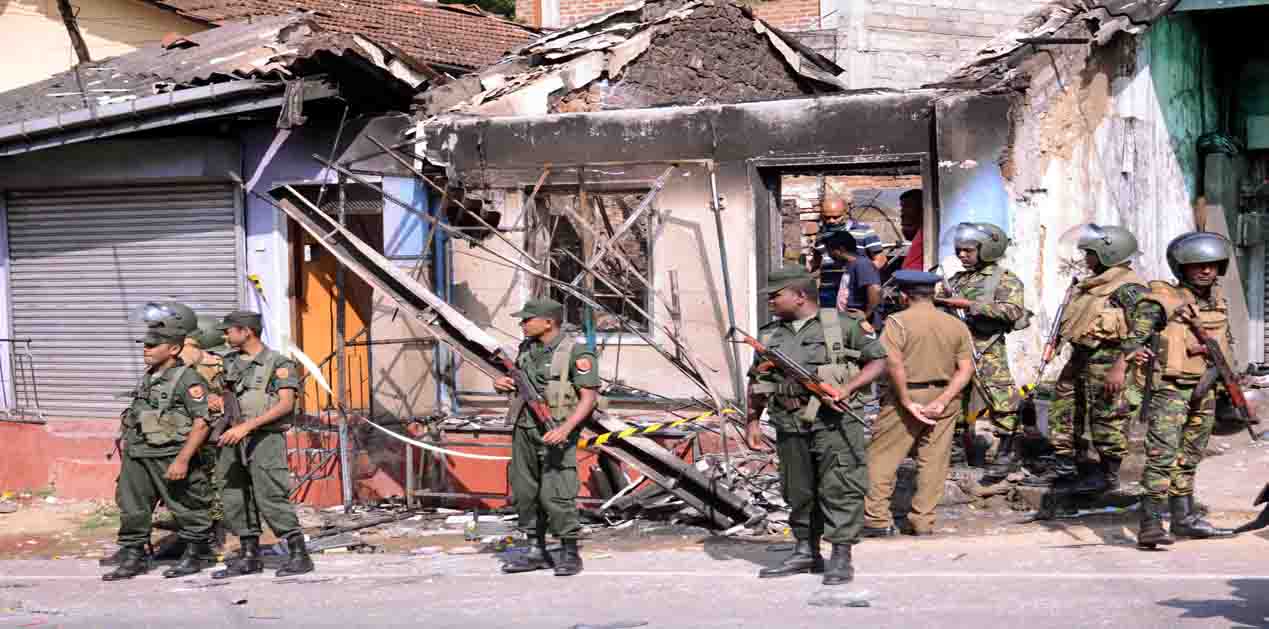


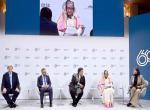
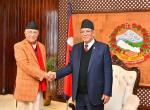
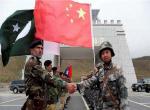

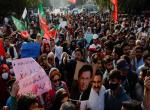
Post new comment